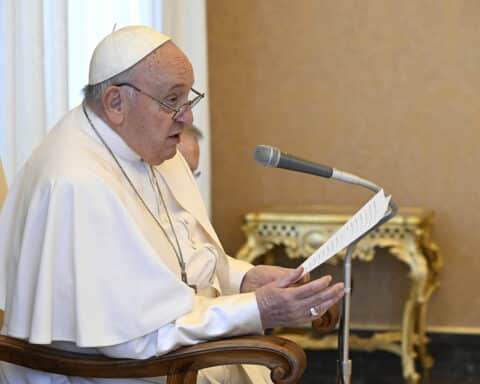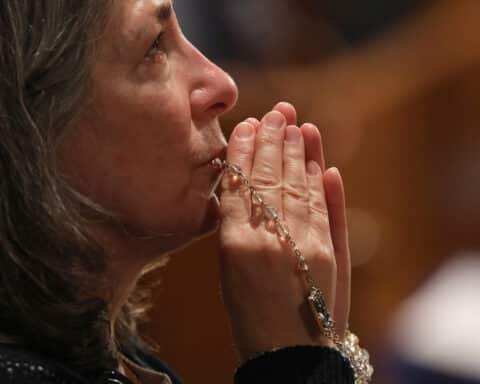Question: I watched a Catholic Mass due to being unable to attend because of injury online this Sunday, Oct. 15, from Ontario, Canada. I was following with my hand missal and noticed much of the wording was different. Content didn’t change, but the words did. Are all Canadian Masses different in this regard in Canada verses the U.S. version? Why is there this difference?
— Jim Schafbuch, via email
Answer: The translation of the Roman Missal is the same that it is here in the United States. However, the translation of the Lectionary is different. It is likely that you noticed this as changed from your hand missal. Local bishops conferences are free to make use of different translations of the Bible, and the Canadians chose the New Revised Standard Version, Catholic Edition (NRSVCE) while the U.S. bishops stayed with the New American Bible Revised Edition (NABRE), which explains why the English text is different than what you are used to hearing here in the United States.
There was pressure for the U.S. bishops to adopt the NRSVCE by those who preferred “inclusive language,” which often replaces words like “man” or references to God as “he,” “him” and so forth with more gender-neutral words such as “they” or “all” and references to God by often repeating “God” and not using the pronouns.
There are, however, theological problems with the approach of the NRSVCE. For example, many of the psalms that say things like “Blessed is the man who fears the Lord …” are references to the Messiah, to Christ, not just to any person. In the Old Testament, many messianic references are easily lost when inclusive language is used. This is not the case with every psalm or verse of the Old Testament, but simply swapping out pronouns and masculine references to God or to the “man who fears the Lord,” in an indiscriminate fashion loses important references to Christ.
Further, while some seek to limit masculine pronouns for God (e.g., he, him, his, Father, Son and so forth), here, too, an important theological teaching is lost. There is a sacramental and marital relationship of God to creation and to the Church. The Church is bride and mother and is acted upon and receives from her spouse Jesus, all that which makes her mother. The baptismal font is the womb of the Church, and we are the result of the chaste union of Christ and his bride the Church. All creation, too, is said to be feminine in relation to God, who is Father and the source of all being and existence. Creation is acted upon and receives from he who is Father and Creator in order to be fruitful. Hence, masculine pronouns and masculine references to God are not merely antiquated notions of a misogynist past. God reveals himself as Father and not mother to emphasize that he is the true origin of all we are and that we are acted upon, and receive from him all that makes us fruitful. All of this is important to the incarnational aspects of our holy faith. God speaks and acts through bodily realities and marital imagery of male and female. “Inclusive” translations leave a lot of this on the cutting room floor.
No translation is perfect, but indiscriminate use of “inclusive” language introduces many challenges and problems that may hide the deeper meaning of texts.





